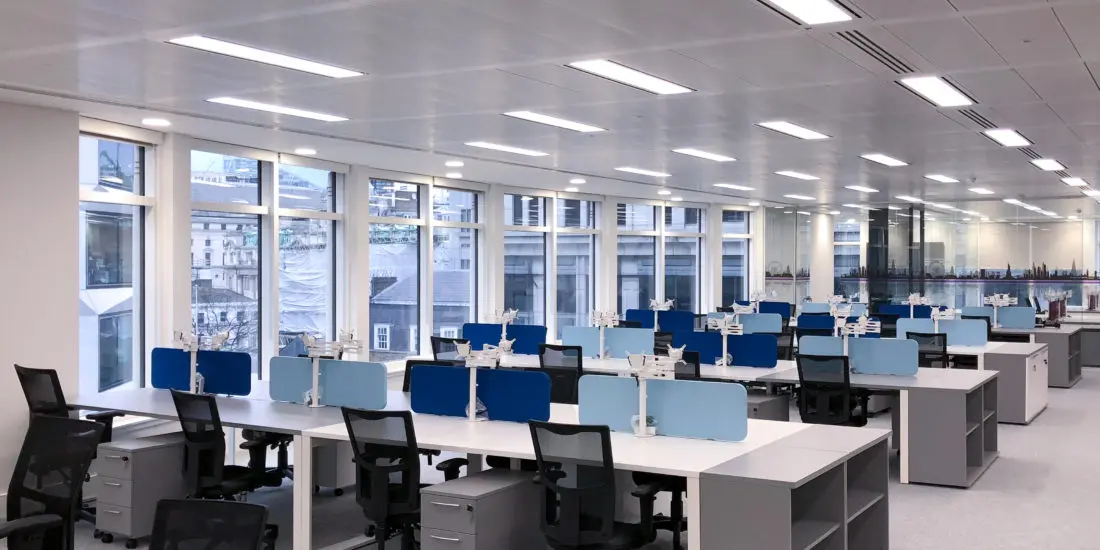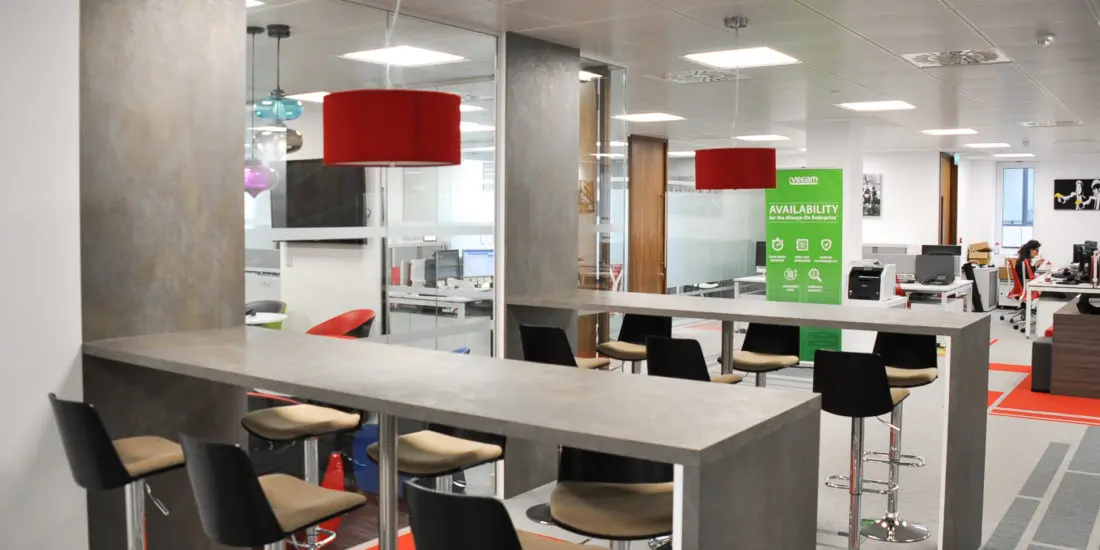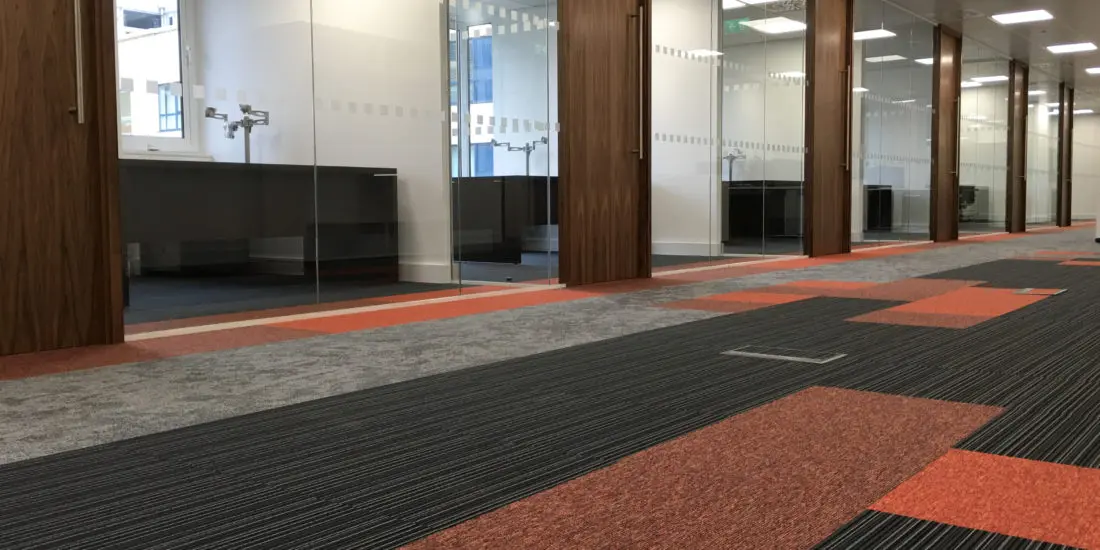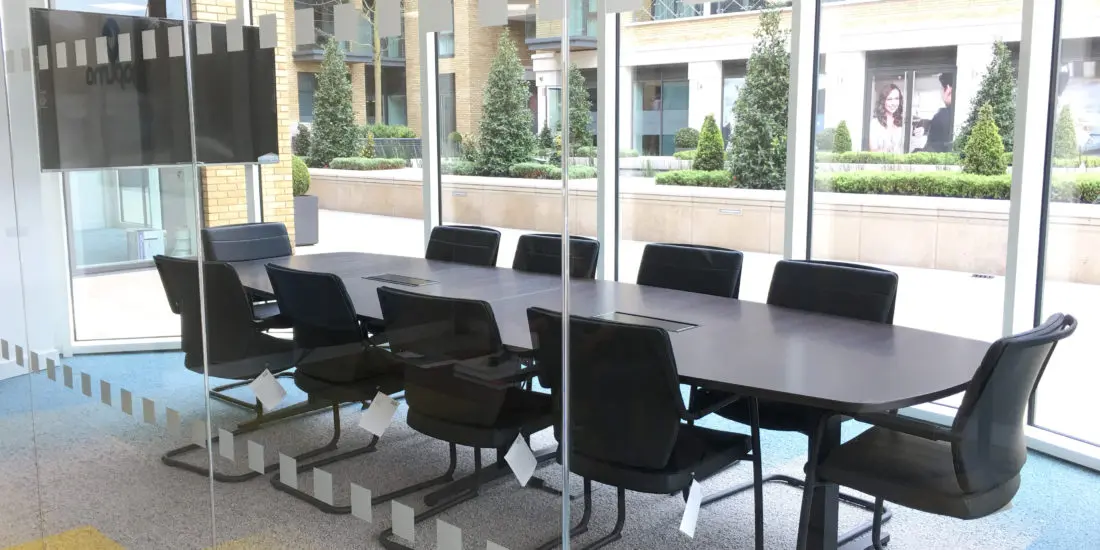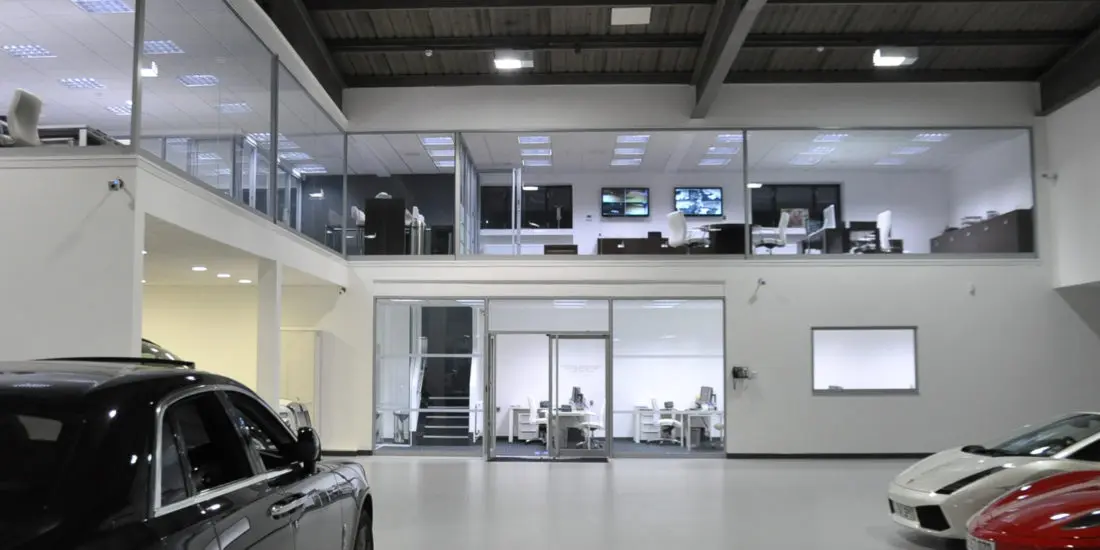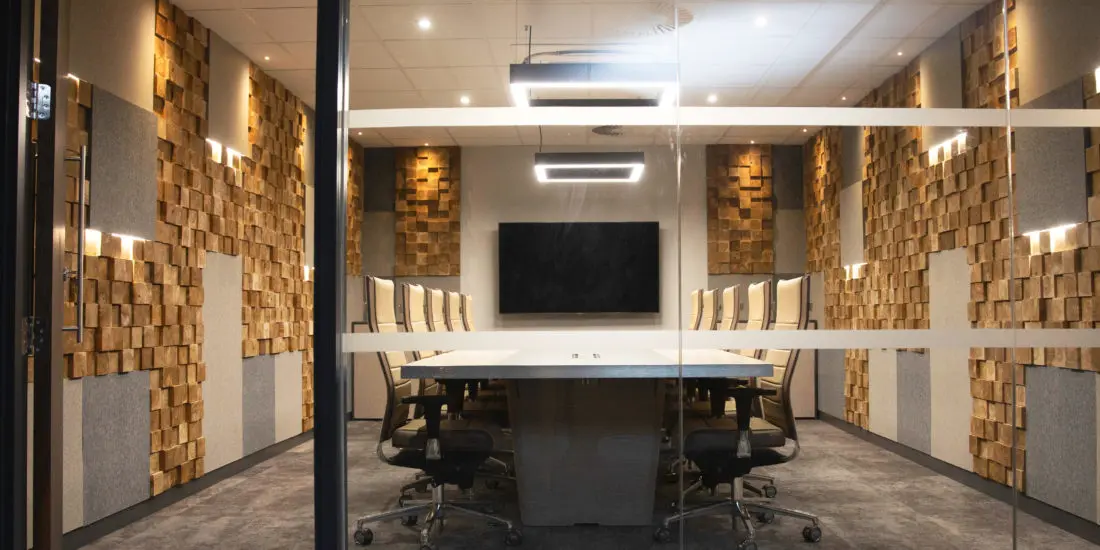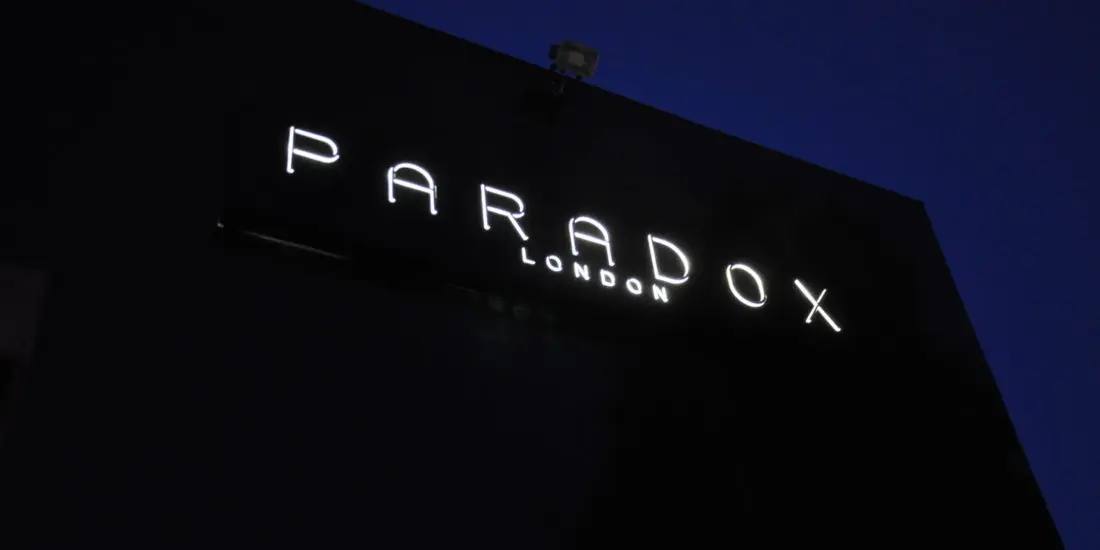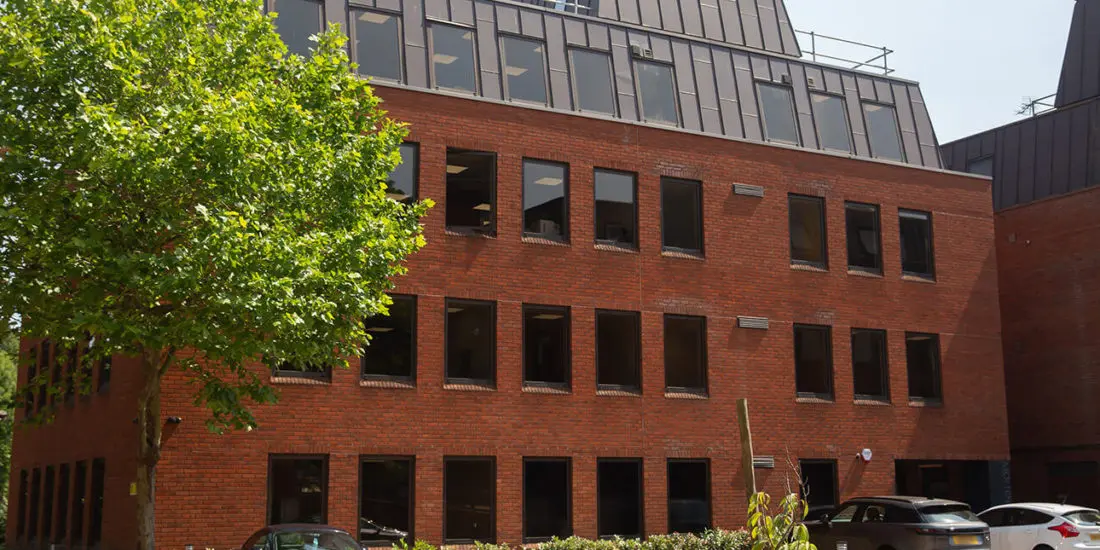A successful office fit-out requires careful orchestration of ten essential steps, from initial goal-setting through final implementation.
Smart companies start by evaluating their
workspace needs, establishing
budgets of £430-1,615+ per square metre, and creating timelines spanning 8-40
weeks.
The process demands attention to legal compliance, employee well-being, and technology integration, whilst partnering
with experienced contractors guarantees smooth execution.
Modern fit-outs blend collaborative spaces with quiet zones, biophilic elements, and future-ready infrastructure - a complex dance that changes ordinary offices into productivity powerhouses.
1. Assessing Your Office Fit-Out Goals and Requirements
When organisations initiate an office fit-out project, the first
essential step involves a thorough
assessment of their goals and requirements. Through careful goal alignment,
companies need to identify their core
objectives, whether they're aiming to increase collaboration, accommodate
future growth, or improve employee well-being. This foundational phase sets the
tone for the entire project's success.
An extensive spatial analysis follows, examining current workspace utilisation patterns and identifying areas that need improvement. Smart organisations take time to evaluate how their office environment can amplify productivity while staying true to their company values. Think of it as creating a workplace DNA that perfectly matches the organisation's culture and future aspirations. The key is striking that sweet spot between functionality and inspiration - where every square metre serves a purpose and every design choice reflects the company's mission. Data-driven analysis through workplace consultancy can provide strategic insights to optimise space utilisation and enhance operational efficiency.

2. Creating a Comprehensive Project Budget and Timeline
Every successful office fit-out project
rests on two critical pillars: a carefully crafted budget and a realistic timeline.
Proper cost estimation involves
analysing various elements, from basic fit-out costs ranging £430-645 per
square metre to high-end solutions reaching £1,615 or more. Smart budget
tracking throughout the project guarantees expenditures stay within planned
parameters while maintaining quality standards.
Timeline planning requires equal attention, with projects typically spanning 8-40 weeks depending on complexity and approach. The Design and Build method, taking 8-12 weeks, offers a faster alternative to traditional fit-outs that might stretch beyond 40 weeks. Modern project managers often favour this efficient approach, which cleverly overlaps design and construction phases while still providing impressive results - proving that good things don't always have to come to those who wait. Free consultations are available to help businesses develop accurate budgets and timelines tailored to their specific requirements.

3. Designing Your Workspace for Maximum Efficiency
How strategically
designed workspaces change ordinary offices into powerhouses of
productivity becomes clear through persuasive data. The numbers tell an
impressive story: well-planned workspace layouts elevate productivity by up to 12% while poor designs drain away 86 precious minutes daily through
unnecessary distractions.
Smart office design isn't just about aesthetics - it's a powerful driver of employee engagement and performance. Natural light streaming through large windows can improve productivity by 15%, whilst ergonomic workstations elevate output by up to 16%. The real magic happens when employees gain control over their environment, leading to an extraordinary 32% jump in job satisfaction. Companies that nail the balance between collaborative zones and quiet spaces find their teams aren't just happier - they're measurably more effective, with engagement levels soaring by 20%. Breakout areas provide essential spaces for informal meetings and relaxation, contributing significantly to improved team dynamics and workplace satisfaction.

4. Selecting the Right Professional Fit-Out Partner
The success of an office fit-out hinges on partnering with the right professional team. Partner selection requires careful
evaluation of experience, financial stability, and communication
capabilities. The ideal fit-out partner demonstrates not just technical proficiency but also a
genuine understanding of workplace
interactions and design collaboration principles.
When evaluating potential partners, look
for these key indicators of excellence:
- A strong portfolio featuring similar-scale projects with
innovative solutions and sustainable design elements
- Clear
communication channels, including regular progress updates, 3D
visualisations, and responsive project management
- Strong financial backing coupled with at least five years of
industry experience and proven cost management skills
This methodical approach to selecting a fit-out partner guarantees a smoother project process and ultimately delivers a workspace that truly reflects your organisation's vision and values. Leading firms offer design workshops with key team members to ensure collaborative decision-making on materials, furniture, and overall aesthetics.

5. Navigating Legal Requirements and Building Regulations
While altering an office space requires
creative vision and skilled execution, successfully manoeuvring the complex web
of legal requirements and building regulations forms the
foundation of any fit-out project. Smart businesses tackle this challenge
head-on by developing an extensive compliance
checklist that addresses everything from fire safety protocols to accessibility standards.
Lease agreements deserve special attention, as they often contain specific fit-out guidelines and 'make good' clauses that can impact both the design process and future obligations. Building permits, fire safety regulations, and health standards aren't just bureaucratic hoops to jump through - they're essential safeguards that protect everyone involved. Smart project managers work closely with legal teams, building inspectors, and safety consultants to verify every aspect of the fit-out meets or exceeds current regulations while maintaining the project's creative vision. Early planning and professional guidance can help tenants save 25-30% on costs compared to landlord-quoted dilapidation works.

6. Implementing Sustainable and Biophilic Design Elements
Building upon solid regulatory
foundations, modern office design
has adopted a revolutionary approach that brings the outdoors inside through sustainable and biophilic elements. The
integration of natural lighting and green materials creates spaces that elevate
employee wellbeing while reducing
environmental impact. Contemporary offices now seamlessly blend nature-inspired
design with functionality, incorporating living
walls, sustainable wood features, and energy-efficient solutions.
Key biophilic elements that change
traditional offices into lively ecosystems include:
- Vertical gardens that purify air whilst serving as stunning focal
points
- Natural lighting systems
that synchronise with employees' circadian rhythms
- Sustainable bamboo partitions and reclaimed wood furniture that
add warmth and character
This approach not only improves workplace aesthetics but also promotes productivity, reduces stress levels, and improves employees' physical and mental health outcomes. Studies demonstrate that well-designed spaces significantly enhance overall employee satisfaction and creative output while fostering a stronger sense of workplace culture.

7. Planning Technology Infrastructure and Integration
Modern office environments demand a
carefully planned technology
infrastructure that forms the digital
backbone of daily operations. Success hinges on a thorough assessment of
current and future needs, from reliable
internet connectivity to sturdy data storage solutions. Today's technology
trends point toward hybrid systems
that blend cloud and on-premise solutions, creating a flexible foundation for
growth.
Smart system integration requires careful consideration of hardware requirements, security protocols, and scalability options. Companies must invest in high-quality servers, implement extensive backup systems, and utilise state-of-the-art security measures, including firewalls and encrypted connections. The key is striking the perfect balance between functionality and future-proofing - because nobody wants their shiny new tech setup to become yesterday's news before the office paint has dried.

8. Managing Construction and Quality Control
Successful office fit-outs hinge on
careful construction management and
stringent quality control measures.
Through thorough construction monitoring
and extensive quality assurance protocols, project managers orchestrate every
aspect of the build-out process. Regular
inspections, detailed documentation, and proactive risk management work together to guarantee projects stay
on track and meet specified standards. Measured surveys provide essential spatial
data needed for accurate planning and execution of office renovations.
Essential components of construction
management include:
- Daily site walkthroughs to spot potential issues before they
become costly setbacks
- Weekly
contractor meetings to align all teams and maintain momentum
- Monthly quality control audits to verify workmanship meets or
exceeds industry standards
A well-executed construction phase converts architectural drawings into reality whilst maintaining budget constraints and timeline objectives. This delicate balance requires skill in both technical oversight and stakeholder communication to deliver exceptional results.

9. Future-Proofing Your Office Space
Forward-thinking organisations recognise
that future-proofing office spaces require a delicate balance of technological innovation, sustainability, and human-centric design. The integration
of smart office innovations like IoT
devices, generative AI systems, and automated environmental controls positions
companies to adjust seamlessly to future workplace trends. Installing raised access flooring provides crucial
infrastructure flexibility by creating dedicated pathways for cables, HVAC
systems and electrical utilities underneath the floor surface.
Beyond technology, sustainable practices play a vital role in future readiness. Energy-efficient systems, carbon-neutral initiatives, and waste-reduction strategies guarantee long-term viability while demonstrating environmental responsibility. The incorporation of biophilic elements and wellness-focused design creates spaces that will continue to support employee health and productivity for years to come. Flexible, reconfigurable workspaces featuring modular furniture and multipurpose areas provide the versatility needed to accommodate changing work styles and team interactions, making them a smart investment for the future.

10. Optimising for Hybrid Work Models and Flexibility
The shift to hybrid work represents one of the most significant changes in workplace design history, with 80% of
organisations now embracing this flexible approach. Today's hybrid workspace
trends point toward activity-based environments that support diverse work styles while enhancing
space efficiency. Modern, flexible office design incorporates utilisation data
to create spaces that truly serve employee
needs.
Biophilic design elements are increasingly
incorporated to boost employee well-being and satisfaction in modern office
spaces.
Key elements of a refined hybrid
workspace include:
- Dedicated collaboration zones with state-of-the-art video conferencing technology to support the
40% of interactions involving remote participants
- Private
focus areas and sound-dampened pods for concentrated work sessions
- Flexible meeting spaces with modular furniture that can evolve
from brainstorming hubs to quiet work areas
With the global flexible workspace market exceeding £43 billion, modern offices must adjust to survive and thrive in this fresh phase of work.

Conclusion
A successful office fit-out changes vision into reality, blending form with function and aesthetics with efficiency. Through careful planning, strategic partnerships, and forward-thinking design, organisations create spaces that not only meet today's needs but adjust to tomorrow's challenges. The path from concept to completion demands attention to detail, commitment to quality, and a profound comprehension of modern workplace interactions - elements that ultimately shape the future of work itself.







